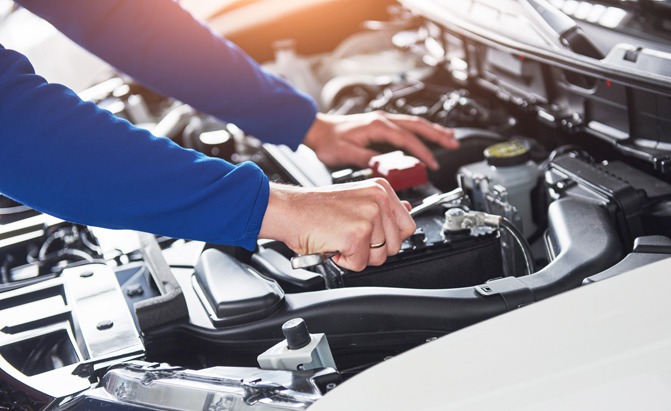Your car is a machine that is made up of many different parts, and each of these parts has a specific lifespan. Depending on how often you drive and the conditions you drive in, some parts may need to be replaced sooner than others. While there is no one-size-fits-all car maintenance schedule, there are some general guidelines you can follow to help you know when to replace car parts.
The first thing you need to do is to familiarize yourself with the different parts of your car and what they do. This will help you to understand what needs to be done to keep them in good working order. You should also find out the recommended replacement interval for each part from your car’s owner’s manual or from a reliable automotive website.
Once you know what needs to be done and when, you can start to create your own car maintenance schedule.

Credit: www.southoak.com
How often should you replace parts on your car?
Assuming you are talking about replacing parts on a car that is otherwise in good working order, how often you need to replace parts will depend on the make and model of your vehicle, how you drive, and where you live.
For example, if you live in a cold climate and regularly drive on icy or salted roads, you will likely need to replace your car’s tires more frequently than someone who lives in a warmer climate and drives mainly on dry roads.
Additionally, if you tend to drive aggressively or put a lot of wear and tear on your car, you will likely need to replace parts more frequently than someone who drives more conservatively.
Some parts, such as brakes and tires, will need to be replaced more frequently no matter how you drive or where you live. In general, brakes should be replaced every 30,000 to 50,000 miles, while tires should be replaced every 25,000 to 50,000 miles.
How long do companies have to make replacement parts?
The length of time that companies have to make replacement parts can vary depending on the type of product and the company’s warranty policy. For example, car companies typically have a three-year/36,000-mile warranty on parts, while appliance companies often have a one-year warranty. Some companies offer extended warranties for an additional fee.
If a product is under warranty, the company is obligated to provide replacement parts free of charge. If the product is no longer under warranty, the company may still offer replacement parts for sale, but is not obligated to do so. The decision to continue making replacement parts for a product that is no longer under warranty is typically based on profitability and customer demand.
In some cases, companies may discontinue making replacement parts for a product even if it is still under warranty. This can happen if the product is no longer profitable for the company to produce, or if the company goes out of business.
What parts should be replaced on a car?
Assuming you would like a list of general maintenance items that should be regularly replaced on a car:
-Oil and filter: Depending on the make of your vehicle and driving habits, most cars will need an oil change between 7,500 and 10,000 miles.
-Tires: Tread depth varies by make and model, but as a rule of thumb, if the tread depth is less than 4/32 of an inch, it’s time for new tires.
-Air filter: A clogged air filter can lead to decreased fuel efficiency and horsepower. Check your owner’s manual to see how often it should be replaced.
-Battery: The lifespan of a car battery is typically 4-5 years, but driving habits and climate can affect that.
If your battery is more than 3 years old, it’s a good idea to have it tested to see if it needs to be replaced.
When should you repair car or replace?
It can be difficult to decide whether to repair or replace your car. Many factors come into play, including the age and condition of the car, the severity of the damage, and the cost of repairs. Here are a few things to consider when making the decision to repair or replace your car:
Age and condition: One of the main factors to consider is the age and condition of your car. If your car is older and starting to show its age, it may not be worth repairing. If the damage is minor, it may be worth fixing, but if it’s major, it may be time to start shopping for a replacement.
Severity of damage: Another thing to consider is the severity of the damage. If it’s a small dent or scratch, repair may be the way to go. But if the damage is more serious, such as a large dent or a cracked windshield, replacement may be a better option.
Conclusion
One of the most important things you can do to keep your car running well is to keep up with a maintenance schedule. Depending on your car’s make and model, the maintenance schedule will vary. However, there are some general guidelines you can follow to know when it’s time to replace various car parts.
For example, your car’s engine oil should be replaced every 5,000 miles or so. The timing belt should be replaced every 60,000 miles. The spark plugs should be replaced every 30,000 miles.
The air filter should be replaced every 20,000 miles.
Of course, these are just general guidelines. It’s important to consult your car’s owner’s manual to get the specific maintenance schedule for your make and model.
By following a regular maintenance schedule, you can help keep your car running smoothly for many years to come.

